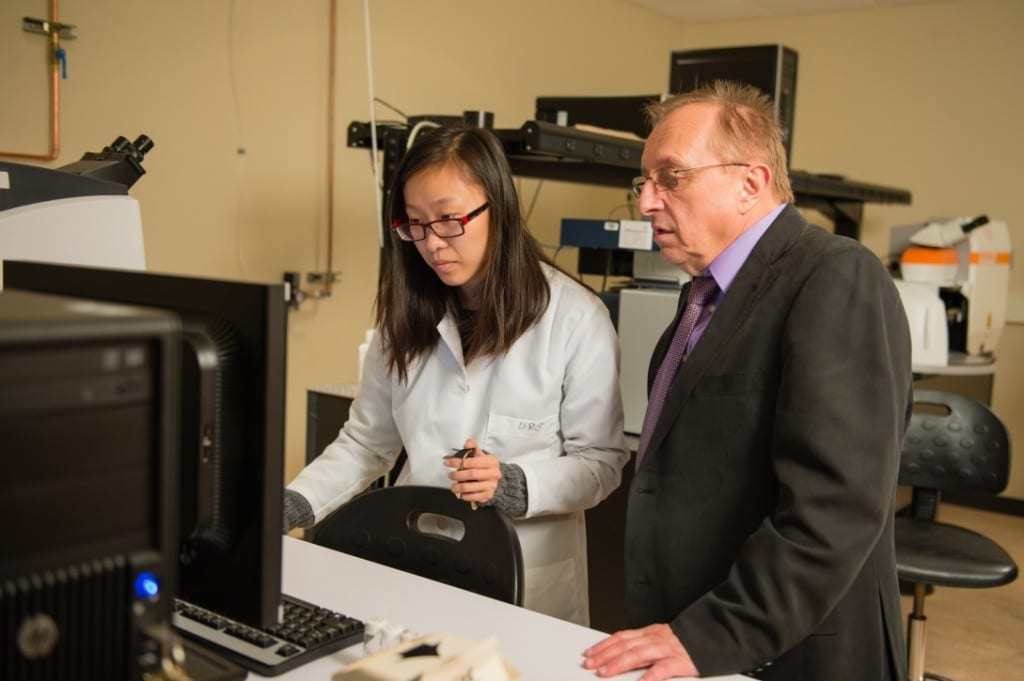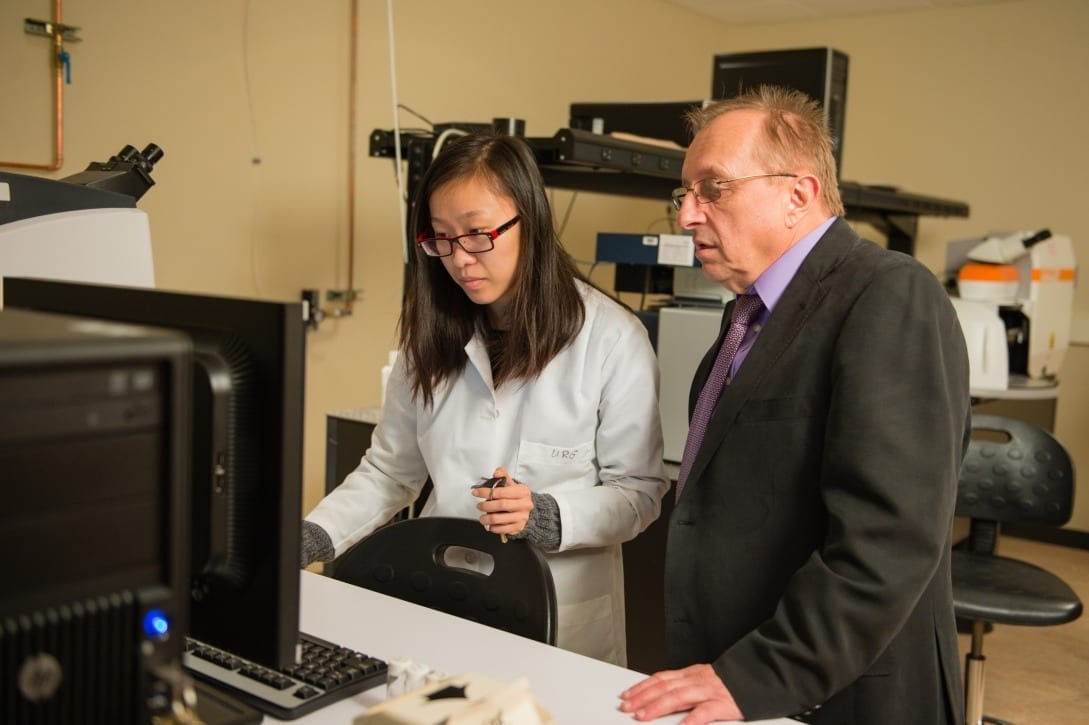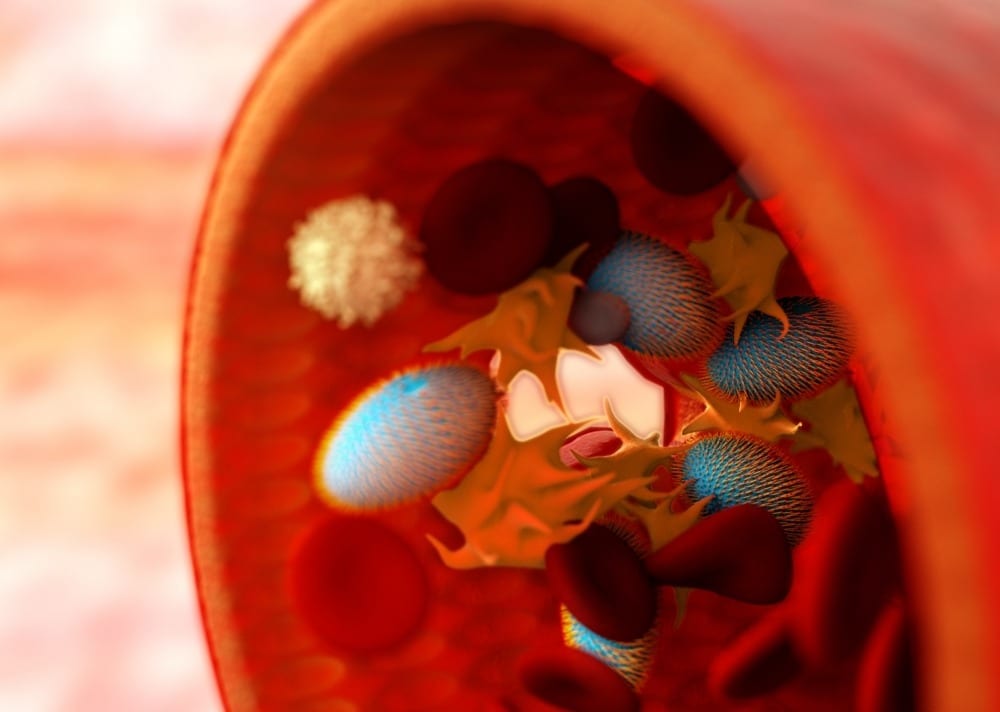
via Clemson
If you cut yourself shaving, it’s no big problem because you know it will heal.
But what if you scratch the screen on your cell phone, or scrape your car up against something and put a long scratch on the fender?
In the future, that may be no problem either, once the technological breakthroughs made at a Clemson University lab find their way onto the market.
Marek Urban, who holds the J.E. Sirrine Endowed Chair in materials science and engineering at Clemson, is doing research that promises to endow inanimate objects with life-mimicking healing abilities.
And the possibilities are nearly limitless.
Beyond paint and plastics are potential applications such as self-healing cloth, military vehicles that patch their own bullet holes and hip replacements that could repair themselves. Or fingernail polish that lasts longer, something a cosmetics company has contacted Urban about.
And the latest permutation in the works: adding the ability to keep iron from corroding, which could mean self-repairing bridges and other structures made of steel.
It’s not just in the coatings, like in paint, where the self-healing process can be incorporated, but it can be infused into the materials that go to make a product, like the artificial joints used in hip replacements.
The secret ingredient in the healing process – sugar.
Sugar, or glucose, “provides sufficient chemistry at this broken interface to allow the materials to stitch together.”
“It’s a baby step in going towards more living synthetic materials.”
In other words, it’s almost like the way cut skin heals, with the same type of chemical reactions occurring.
“So in a way it’s a living system, but it’s certainly a very primitive living system at this point,” Urban said.
The building blocks of the process are polymers, long chains of molecules that are “stitched together like beads on a necklace,” he said.
Those extremely versatile materials can be either laced together to form a strong network or melted into a desired shape. The use of sugar, which makes Urban’s process different from work done by other scientists, facilitates the sewing up of breakages in the molecular chains.
The Latest on: Self-healing devices
[google_news title=”” keyword=”Self-healing devices” num_posts=”10″ blurb_length=”0″ show_thumb=”left”]
via Google News
The Latest on: Self-healing devices
- GadgetShieldz FlexArmor review: Protection as good as glasson April 27, 2024 at 9:59 pm
When tempered glass adds too much bulk or if you don't want to use a transparent case prone to yellowing, GadgetShieldz's FlexArmor range of screen and body protectors could be just what the doctor ...
- The 10 Best Microcurrent Devices for an Instant Face Lifton April 26, 2024 at 12:56 pm
If you're looking to target larger areas of the face, like your cheeks and décolletage, opt for ReFa's Carat Ray Face device, which uses the same solar panel technology as its smaller counterpart. Its ...
- Self-Healing Materials Market Estimated to Reach US$ 15.57 billion by 2032, Fueled by Infrastructure Surge in Developing Economieson April 26, 2024 at 8:03 am
The self-healing materials industry size estimated at US$ 1.61 billion in 2022 is anticipated to grow at a CAGR of 25.5% from 2022 to 2032. Materials that are capable of self-healing are stimulated by ...
- 3 Psychologist-Approved Films That Depict Mental Illness Realisticallyon April 25, 2024 at 7:20 am
Modern cinema can be hard to relate to, but these three films offer a genuine and accurate glimpse into mental health.
- Cisco: Market Underestimates Its AI Potential And Will Regret Iton April 24, 2024 at 10:39 am
Cisco is positioned to integrate AI features into its network switches and observability business. Read why this could lead to additional growth areas for CSCO.
- The 6 best laptops for Excel in 2024on April 21, 2024 at 3:30 am
Buying one of the best laptops for using Excel isn’t as simple as just heading to the best laptops list and buying one of those. Well, it kind of is but using Excel requires slightly different ...
- Best red light therapy devices for getting an at-home glow-upon April 18, 2024 at 7:24 am
From multi-tasking masks that brighten and tighten skin to handheld wands that zap away acne, these are the best red light therapy devices for every skin issue.
- Polydimethylsiloxane Market: Unveiling Lucrative Opportunities in Medical, Cosmetics, and Self-Healing Compositeson April 18, 2024 at 2:20 am
The global polydimethylsiloxane market is anticipated to create lucrative growth opportunities over the assessment period from 2022 to 2032. The global market held a valuation of US$ 1,533.7 Million ...
- Lenovo's Secure by Design Thinking Puts Cybersecurity at the Core of Business Strategyon April 16, 2024 at 7:28 am
Lenovo ThinkShield defends business without compromising on productivity.
- The 10 Best At-Home Laser Hair Removal Devices, According to the Proson April 11, 2024 at 12:49 pm
While a number of enthusiasts may prefer to visit an expert to get rid of unwanted hair, using one of the best at-home laser hair removal devices is another way to reach your beauty goals when a ...
via Bing News











